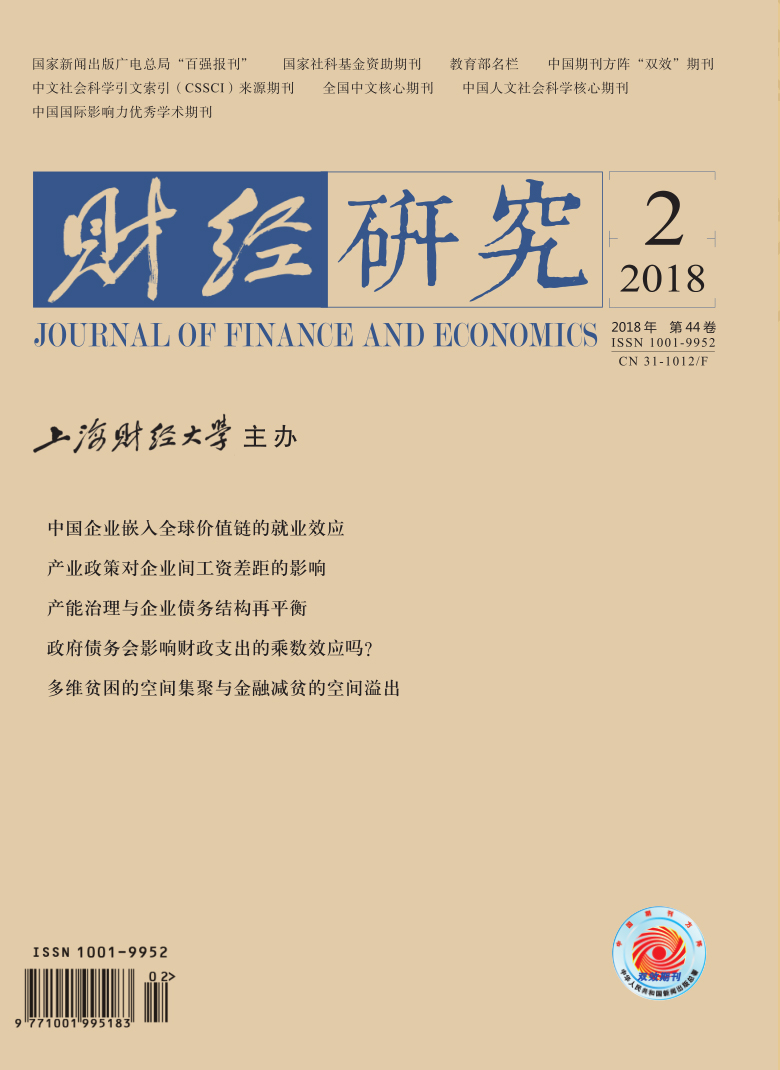文章利用中国30个省份1999−2014年的省际面板数据,结合空间计量模型探讨了农村贫困的空间集聚效应和金融减贫的空间溢出效应。研究发现,不管是采用地理距离权重、经济距离权重还是嵌套权重,农民收入贫困、教育贫困和医疗贫困均呈现出显著的空间正向关联,意味着贫困分布呈现典型的“穷-穷”集聚特征,这一分布特征实际上从贫困角度验证了中国区域发展的不平衡。对收入贫困和教育贫困,农村金融发展不仅具有直接的减贫作用,还通过空间溢出效应对邻近省份发挥间接减贫作用,且这种溢出效应带来的减贫效果比直接效应更为显著。对医疗贫困等公共服务上的贫困,其改善主要依赖于政府财政支出和当地经济水平的发展。文章的研究结论有助于政府从多维视角重新审视农民面临的贫困问题,为“十三五”实施全面脱贫拓宽了视野。
多维贫困的空间集聚与金融减贫的空间溢出*——来自中国的经验证据
摘要
参考文献
1 陈强. 高级计量经济及Stata应用[M]. 北京: 高等教育出版社, 2014.
10 姚耀军, 李明珠. 中国金融发展的反贫困效应: 非经济增长视角下的实证检验[J]. 上海财经大学学报, 2014, (1): 69—76.
12 Beck T, Asli D K, Levien R. Finance, Inequality and the Poor[J]. Journal of Economic Growth, 2007, 12(1): 27—49. DOI:10.1007/s10887-007-9010-6
13 Bruce E H. Sample Splitting and Threshold Estimation[J]. Econometrica, 2000, 68(3): 575—603. DOI:10.1111/ecta.2000.68.issue-3
14 Burgess R, Pande R. Do Rural Banks Matter? Evidence from the Indian Social Banking Experiment[J]. The American Economic Review, 2005, 95(03): 780—795. DOI:10.1257/0002828054201242
15 Clarke G R G, Xu L C, Zou H F. Finance and Income Inequality, What Do the Data Tell Us? [J]. Southern Economic Journal, 2006, 72(3): 578—596. DOI:10.2307/20111834
16 Dollar D, Kraay A. Growth is Good for the Poor[J]. Journal of Economic Growth, 2002, 7(3): 195—225. DOI:10.1023/A:1020139631000
17 Geda A, Shimeles A, Zerfu D. Finance and poverty in Ethiopia[R].Research Paper No. 51, United Nations University, 2006.
18 Greenwood J, Jovanovic B. Financial Development, Growth, and the Distribution of Income[J]. Journal of Political Economy, 1990, 98(5): 1076—1107. DOI:10.1086/261720
19 Jeanneney S G, Kpodar K. Financial Development and Poverty Reduction: Can There be a Benefit without a Cost [J]. The Journal of Development Studies, 2011, 47(1): 143—163. DOI:10.1080/00220388.2010.506918
引用本文
傅鹏, 张鹏, 周颖. 多维贫困的空间集聚与金融减贫的空间溢出*——来自中国的经验证据[J]. 财经研究, 2018, 44(2): 115–126.
导出参考文献,格式为:





 8697
8697  9229
9229

